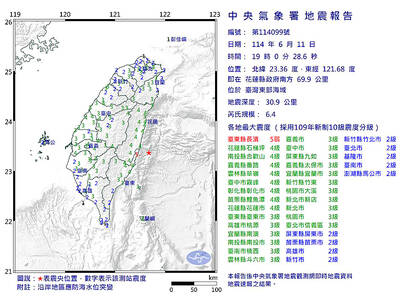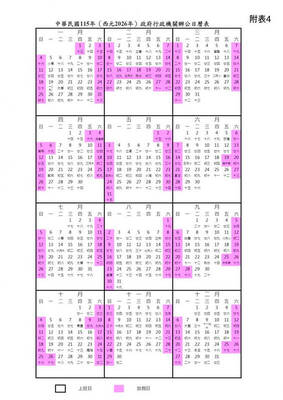"It's over for red poodles," dog breeder and proprietor of the Master Dog salon Lin Chiu-li (
Even in the fickle pet market, the rise and decline of the red poodle was remarkable for its swiftness. Called "teddy dogs" because of the puffy hairstyle they are usually given, red poodles became fashionable when Taiwanese supermodel Lin Chi-ling's (
Lin Chiu-li, who is a breeder of mostly white poodles and maltese dogs, said the red poodle was "the" dog of 2005. Such puppies sold then at an average price of NT$60,000.
"Some dogs, sold as `mini' red poodles, were fetching even higher sums," Lin Chiu-li said. "We're talking about NT$100,000 and above."
"When demand explodes like that, reputable breeders can't keep up," she said. "Instead, there's a rush into the market to make a fast buck."
Less scrupulous pet dealers began to import or even smuggle adult and pregnant females from countries such as Thailand to satisfy the demand, she said.
"Large dogs, squat dogs ... as long as they were red, they took them all," she said.
"Puppy mill" operators flout the rules of dog breeding when they try to churn out as many puppies as possible -- as cheaply as possible -- before a breed becomes passe, she said.
"Since one male dog can impregnate many females, they would pair females of other breeds to the male they want, kill all the males of the resulting litter and breed the females to a male of the desired breed again," she said. "After two or three generations, they consider the puppies `pure' enough to sell."
Director of the Kaohsiung Concern Stray Animal Association Wang Chun-ching (
"We have been to facilities where dogs are living in pitiable conditions," Wang said. "The dogs all have their larynxes removed. They're caged and bred until they're dead."
Lin Chiu-li blames the uneven quality of dogs sold during the rush for the red poodle's equally swift decline in popularity.
"We started hearing complaints from people that their `mini poodles' were getting bigger," she said.
By the middle of last year, red poodle fever had already started to recede, she said.
Other fashionable dogs have fared even worse.
"Owners usually keep their red poodles or are able to give them away to another family," Lin Chiu-li said. "But many labradors, golden retrievers and other large dogs end up on the streets."
"We have more than 10 golden retrievers in our shelter right now. There are also many labradors and huskies," Wang said.
"Even smaller dogs can be abandoned if it becomes more obvious as a dog grows older that it is not purebred." she said.
"We need more regulation of the dog breeding industry in this country," she said.
"Any time a show or news item features a breed, it can quickly cause a fad," she said. "The Japanese movie Quill made labradors popular. A news item about a husky that supposedly saved a baby from drowning made that breed popular. With hormone shots, breeders can have puppies for sale within a few months."
Lunar New Year traditionally sees a boom in puppy sales, but this year was slower, Lin Chiu-li said.
"In previous years, individual stalls in a night market could move more than 100 puppies over the two-week spring holiday, but we did not see the same rush of orders this year," she said.
But a new trend is emerging nationwide. Gray poodles, called "koalas" are the next big thing.
"Another color variation and another gimmicky name," Lin Chiu-li said. "It's like the red poodle phenomenon all over again."

A magnitude 6.4 earthquake struck off the coast of Hualien County in eastern Taiwan at 7pm yesterday, the Central Weather Administration (CWA) said. The epicenter of the temblor was at sea, about 69.9km south of Hualien County Hall, at a depth of 30.9km, it said. There were no immediate reports of damage resulting from the quake. The earthquake’s intensity, which gauges the actual effect of a temblor, was highest in Taitung County’s Changbin Township (長濱), where it measured 5 on Taiwan’s seven-tier intensity scale. The quake also measured an intensity of 4 in Hualien, Nantou, Chiayi, Yunlin, Changhua and Miaoli counties, as well as

Taiwan is to have nine extended holidays next year, led by a nine-day Lunar New Year break, the Cabinet announced yesterday. The nine-day Lunar New Year holiday next year matches the length of this year’s holiday, which featured six extended holidays. The increase in extended holidays is due to the Act on the Implementation of Commemorative and Festival Holidays (紀念日及節日實施條例), which was passed early last month with support from the opposition Chinese Nationalist Party (KMT) and Taiwan People’s Party. Under the new act, the day before Lunar New Year’s Eve is also a national holiday, and Labor Day would no longer be limited

COMMITMENTS: The company had a relatively low renewable ratio at 56 percent and did not have any goal to achieve 100 percent renewable energy, the report said Pegatron Corp ranked the lowest among five major final assembly suppliers in progressing toward Apple Inc’s commitment to be 100 percent carbon neutral by 2030, a Greenpeace East Asia report said yesterday. While Apple has set the goal of using 100 percent renewable energy across its entire business, supply chain and product lifecycle by 2030, carbon emissions from electronics manufacturing are rising globally due to increased energy consumption, it said. Given that carbon emissions from its supply chain accounted for more than half of its total emissions last year, Greenpeace East Asia evaluated the green transition performance of Apple’s five largest final

Taiwan is to extend its visa-waiver program for Philippine passport holders for another year, starting on Aug. 1, Minister of Foreign Affairs Lin Chia-lung (林佳龍) said on Friday. Lin made the announcement during a reception in Taipei marking the 127th anniversary of Philippine independence and the 50th anniversary of the establishment of the Manila Economic and Cultural Office (MECO) in Taiwan, the Ministry of Foreign Affairs said. The decision reflected Taiwan’s commitment to deepening exchanges with the Philippines, the statement cited Lin as saying, adding that it was a key partner under the New Southbound Policy launched in 2016. Lin also expressed hope